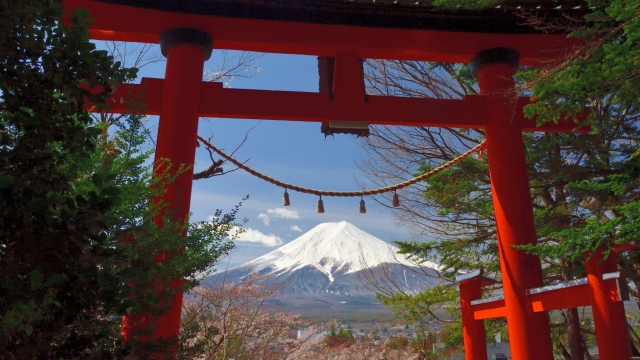
Japan, a land rich in history and tradition, is home to the serene beauty of Shinto shrines. These sacred spaces, often nestled in lush forests or atop tranquil mountains, beckon visitors with their unique architecture, vibrant torii gates, and deep spiritual significance. As the indigenous faith of Japan, Shinto embodies a profound connection to nature, honoring the kami, or spirits, that inhabit the world around us. Each shrine tells its own story, reflecting centuries of worship, culture, and reverence for the natural environment.
Exploring Shinto shrines in Japan is an invitation to experience a fascinating blend of spirituality and artistry. From the bustling streets of Tokyo to the tranquil paths of rural villages, these shrines offer a glimpse into a time-honored practice that continues to thrive. Visitors often find themselves captivated by the harmonious relationship between the timeless rituals conducted within these sacred spaces and the breathtaking landscapes that surround them. As you wander through the vibrant red gates and serene gardens, the whispers of the ancients come alive, inviting you to discover the enchantment that lies at the heart of Japanese culture.
Historical Significance of Shinto Shrines
Shinto shrines in Japan hold a profound historical significance that traces back to ancient times. These sacred spaces are dedicated to kami, the spiritual beings or deities worshipped in Shinto, and they symbolize the harmony between nature and spirituality. The origins of Shinto can be found in Japan’s prehistorical animistic beliefs, reflecting the deep respect for the natural world that has been a hallmark of Japanese culture. Over the centuries, these shrines have evolved, but their core purpose remains rooted in the connection between the divine and the human experience.
Throughout Japan’s history, various dynasties and shogunates have influenced the construction and design of Shinto shrines. Each era brought unique architectural styles and rituals, which reflect the sociopolitical landscape of the time. Notable shrines, such as Ise Jingu, were established to honor the sun goddess Amaterasu, emphasizing the integral role of Shinto in Japan’s imperial lineage. The significance of these shrines extends beyond mere religion; they are landmarks of cultural identity and continuity, embodying the traditions passed down through generations.
The Meiji Restoration in the late 19th century marked a pivotal moment for Shinto shrines in Japan. This period saw the formal separation of Shinto and Buddhism, resulting in the promotion of Shinto as a state religion. As part of this movement, numerous shrines were constructed or renovated, reinforcing their place in national pride and identity. Today, Shinto shrines continue to be integral to Japanese life, serving not only as sites of worship but also as venues for community gatherings, festivals, and rites of passage, preserving the rich tapestry of Japan’s historical and cultural heritage.
Architectural Wonders and Designs
Shinto shrines in Japan are known for their harmonious integration with nature, reflecting the belief that the sacred and the natural world are intertwined. The designs often showcase wooden structures that blend seamlessly into their surroundings, allowing the beauty of the landscape to enhance the spiritual experience. The use of natural materials, such as wood and stone, emphasizes simplicity and authenticity, inviting visitors to appreciate the craftsmanship that has been honed over centuries.
One of the defining features of Shinto shrines is the torii gate, which marks the entrance to a sacred space. These gateways are not only architectural symbols but also represent a transition from the mundane to the sacred. Each torii is uniquely crafted, often painted in vibrant orange or left in its natural wood state, allowing shrines to convey distinct identities while serving a common purpose. The symmetrical lines and gentle curves of these gates contribute to the serene atmosphere that is characteristic of Shinto sites.
The layout of Shinto shrines is typically characterized by open spaces, connecting the main hall, or honden, with a surrounding environment that fosters a sense of tranquility. Sacred objects and offerings are often placed in these areas, creating spaces for contemplation and prayer. The entire design ethos promotes a strong sense of spirituality, inviting visitors to not only admire the architectural beauty but also to engage in the rituals that have defined Japanese culture for generations.
Rituals and Festivals at Shrines
Shinto shrines in Japan are vibrant centers of spiritual life, where rituals and festivals play a crucial role in maintaining the connection between the divine and the community. One of the most significant rituals is the annual celebration of the shrine’s deity, known as the "sai祭り" or shrine festival. These events often include traditional music, dance, and the carrying of portable shrines called "mikoshi." During these festivals, the community comes together to pray for good fortune, health, and prosperity, reaffirming their bond with the kami.
In addition to the main festivals, many shrines host seasonal events that align with the agricultural calendar, such as rice planting ceremonies in spring and harvest festivals in autumn. These rituals not only express gratitude for the bountiful harvest but also invoke blessings for future prosperity. Participants dress in traditional attire, and the atmosphere is filled with the sights and sounds of celebration, with food stalls offering local delicacies, making these events a cherished part of community life.
Visitors to shinto shrines in Japan can witness daily rituals that reflect the ongoing spiritual practice of the Japanese people. Simple acts like purification at the temizuya, where worshippers cleanse their hands and mouths, are an integral part of every visit. Additionally, rituals such as the "hatsu-mode," the first shrine visit of the year, highlight the importance of starting anew with blessings for the year ahead. Each of these moments offers insight into the deep spirituality that thrives within the walls of these sacred spaces.
Cultural Impact and Preservation Efforts
Shinto shrines in Japan serve as vital cultural landmarks that not only embody the spiritual essence of the Shinto faith but also reflect the rich historical tapestry of the nation. These shrines are central to local communities and festivals, playing a significant role in both maintaining traditions and fostering a sense of identity among the people. The architectural styles of these shrines, characterized by their wooden structures, detailed carvings, and natural settings, inspire admiration and contribute to Japan’s cultural heritage.
神社 おすすめ
Efforts to preserve Shinto shrines are crucial in the face of modernization and urbanization. Local governments and communities partner with spiritual leaders to ensure that these areas remain sacred spaces, maintaining their original designs and functions. Restoration projects are often funded by both public and private organizations, demonstrating a collective commitment to keeping these sites intact for future generations. Educational programs also help raise awareness about the importance of these structures, encouraging community involvement and respect for the traditions they represent.
Moreover, the global interest in Shinto shrines has sparked tourism that further emphasizes the need for preservation. Many visitors are drawn to the serene beauty and spiritual significance of these sites, which has prompted new conservation initiatives to manage the impact of tourism while safeguarding the cultural integrity of the shrines. By fostering both reverence and understanding, Shinto shrines in Japan continue to enchant visitors and remain resilient symbols of the nation’s enduring heritage.



